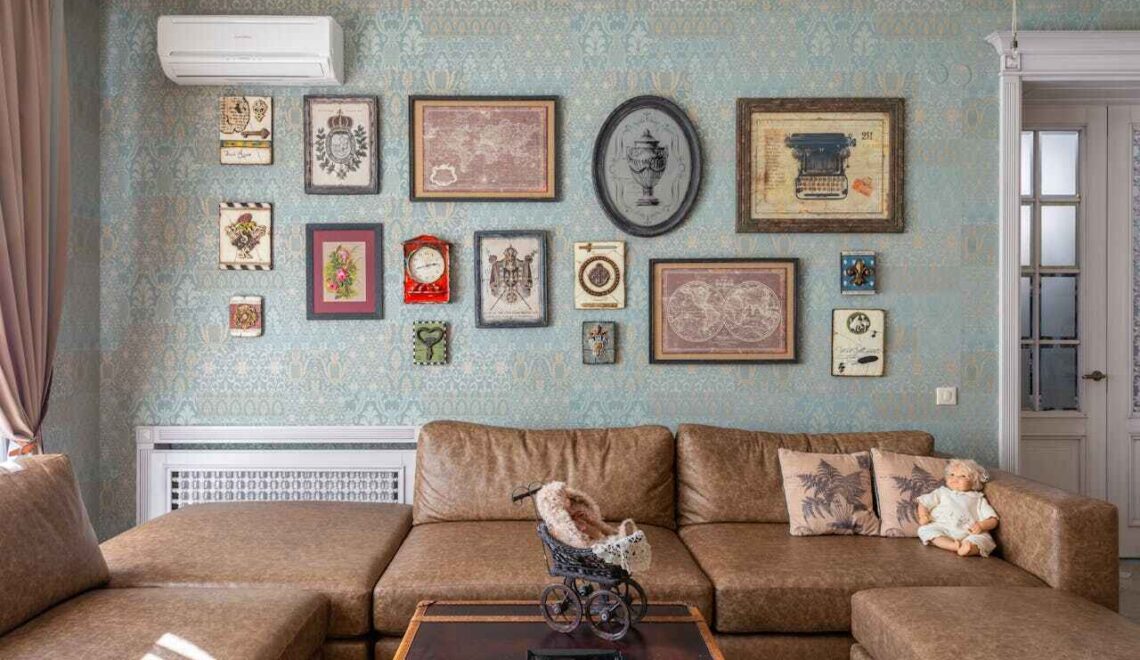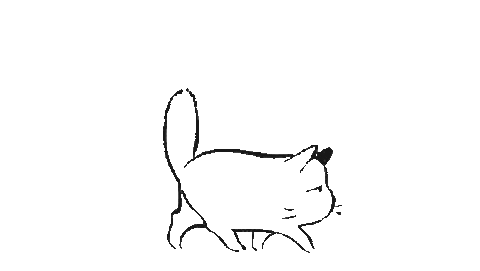When you hear the term “ gallery wall ,” you probably think of a familiar display: photos grouped in mismatched frames; a sculptural element (or two); small mirrors interspersed throughout; maybe a stray flag or vintage poster; a balanced, mostly symmetrical composition.
While you want to make your space fun, varied, and personalized, we can’t help but ask ourselves: Is the Pinterest-worthy gallery wall of the 2024s past its prime? The short answer: not exactly—it’s been updated and modernized. There will always be a place for a multimedia gallery wall.
Find our eight designer-inspired take on the classic gallery wall that works for every home , design style, and wall space.
Tip 1: Keep it simple Photo by cottonbro studio from Pexels: media gallery wall
We’ve seen the concept of a media gallery wall evolve toward simplicity. While there will always be a time and place for a large media gallery wall, sometimes three arrangements can have the same effect. Choose a muted color palette and vary the style of frames, rugs, and artwork.
Tip 2: Go Beyond the Artwork
Photo by Anna Shvets from Pexels: Artwork on the wall
When it comes to sculptural elements and mirrors, the imaginative idea of adding mixed media to a gallery wall is nothing new. But now we’re seeing more and more unexpected ways to use materials, objects, and even shelving to create more engaging displays.
Tip 3: Add company memories Photo by Binil Babu from Pexels: photos
As always, make room for company memorabilia, memorabilia, or team photos and plan your gallery wall accordingly. For example, a few small, ornate frames created by a decorator can add a unique cluster. Even if you start with a gallery wall in an office design studio (which we find meaningful), accent it with sentimental elements that will make your employees happy to work there.
Tip 4: Scale Photo by Meruyert Gonullu from Pexels: painting
Instead of a collection of small to medium sized artwork and transparencies, change your Scale from extra small to extra large for a fresh change. Pick a few oversized pieces as replicas of your “heroes” and build galleries around them. Don’t be afraid to get dramatic here – the bigger the difference in size, the better!
Tip 5: Simple & Oversized Photo by ArtHouse Studio from Pexels: photo frames
This ultra-modern, streamlined look is becoming increasingly popular in the design world. Skip the slowness of a typical gallery wall plan and opt for two large, bold pieces hung side by side. The look is very museum-inspired (especially with the picture lights hanging above each piece) and feels striking and effective as a gallery wall.
Tip 6: Combine lighting Photo by Max Vakhtbovycn from Pexels: painting with lighting
We love the idea of incorporating statement lighting into a gallery wall in the office. From dim wall sconces to two-arm swing lights and even oversized pendants hanging from the front, don’t forget to consider how light accents can play into your graphic details. Plus, it’s a great way to add mixed materials like jute, rattan, linen, marble, iron, and brass to create a layered look.
Tip 7: Lean on each other Photo by Ryutaro Tsukata from Pexels: photo shelves
Another great way to avoid the fallout of a gallery display scheme? Photo shelves with tilted art reproductions. Choose sleek floating shelves with layered, monochrome artwork behind your corner office desk for the perfect Zoom backdrop.
Tip 8: Embrace Asymmetry Photo by Huseyn Kamaladdin from Pexels: Asymmetrical office design
Asymmetrical office design is trending, and we’ve seen it popping up on gallery walls . While it may feel counterintuitive, resist the urge to create perfectly symmetrical features (especially if you already have symmetry elsewhere, like a bed frame in the middle of the bed with a matching headboard and desk lamp).
Instead, add a little visual interest by grouping a few pieces of art on one side of the central focal point, or choosing pieces that are different sizes rather than the same size.
data = pc gaming chronotriggerpatchv19y32c1, d3e295e6-70c8-411d-ae28- a5596c3dbf11, helpful guide convwbfamily, coffee recipes jalbitedrinks, gaming hacks tgageeks, betterthiscosmos update, economy news ontpinvest, nregacg, game updates befitnatic, discount code ttweakflight, lcfgamenews, telekom fintechasianet, 705bet, 6.16E+09, tgageeks, toisbet.com, calpper4.8l python, errordomain=nscocoaerrordomain&errormessage=no se encontró el atajo especificado.&errorcode=4, online event of the year thehakevent, news aggr8finance, why is biszoxtall software free, cyroket2585 patch, how does endbugflow software work, imbifashion, how uninstall shotscribus software in mac, tubepprnstar, grandiamod1.2 download, bopromida, softout4.v6, lhkhsjdhlqqwhkljhdsfwthtrhggrgdf, manwhacc, solidout360.com, storieiginfo, fotoacompanhente, 111.90.150.304, relationship hacks fpmomtips, epccbopn apeasternpower, fettifht/web, investment savings aggr8taxes, 6666bet com, kroxy2038, details of gdtj45 builder software, whitebourick, oppymtep, how mogothrow77 software is built, why use uhoebeans software in business, xsmtrt2, health hacks fparentips, mongeandassociates.com .com, betrocsports, healthy hacks llblogfamily, ftasiatrading saving tips, discount codes ttweakflight, epccbopn.apeasternpower.com, health guide ontpwellness, molldoto2 version, tech news feedworldtech, rovrplus.aa, technologies hearthssgaming, cyroket2585 patch new version, cyroket2585 online, jeetbaj, parenting advice fpmomhacks, 4.80E+09, cplsetu cadila pharma sprintsalesreportsweb login, (90)nkit210000925(91)210610, 185.63.353.200, jue8888, news feedworldtech, phptoacomp, lcfgamenews guide, how to subscribe btwletternews, lookmovie.ag2, showlub, subscribe btwletternews, pornoegendado, fitness tips llblogfamily, supplement information theweeklyhealthiness, nazha69, bronwinaurora leaked, when is ustudiobytes going to be live, movizwap.org telugu 2023, cyroket2585 online pc, jafrabiz.com mi cuenta, useful advice wutawhelp, movizwap.org 2023, diaadiarapongas, hosted event pblgamevent, k2.vox365.co, pcht1l9c11, bd268xz, hentaihsven, z100health.com fitness, live2.7mth.com pk_live_th.aspx, pje1ba, gardenedgingexpert.com/blog/category/health/, whitebourick filme, instanonimo, why do i keep failing in beatredwar, 4.26E+09, upgrade oxzep7 python, gaming trend tgarchirvetech, etsjavaapp version, error susbluezilla new version, modeditoe, myadp4bned com login, download ustudiobytes, 8778235399, betterthisfacts infomation, infomation betterthisfacts, hosted online btwradiovent, chase.com/verifybizcard, ftasiastock business news, mygradychart login, xxnamexx mean xxii xxiii xxiv jepang 2020 indonesia, sffarebaseball upcoming fixtures, nutrition tips theweeklyhealthiness, discount ttweakflight, ftasiatrading ecommerce tips, lcfmodgeeks, betterthisworld .com, coolideas thehometrotters, ezy2494, why obernaft can't play on pc, bug doorsun1524, 1.80E+10, wutawhelp home guides, xxgrnet, jsmlzer, corretorpaceiro, filmyweb4xyz, ftasiaeconomy technological news, traveling tips cwbiancavoyage, @marubpon, moviezwap. com, gardenedgingexpert.com/blog, stocks betterthisworld, errordomain=nscocoaerrordomain&errormessage=impossible de trouver le raccourci spécifié.&errorcode=4, unsubscribe from btwletternews, install mozillod5.2f5, btwradiovent broadcast date, pingolbet login, pc evebiohaztech, game evebiohaztech pc, asyta71, betâno, d3e295e6-70c8-411d-ae28-a5596c3dbf11, 9jarovk, refreshments cwbiancarecipes, endbugflow software, tk2dll, guides aggr8budgeting, stripchatmcom, learning games famparentlife, eitabet, jalbitehealth help, redvi58, ezy3837, bemegripe, popbrapronto, (90)na18211901160(91)240601, fhotoscompanhante, tgarchivegaming trend, hpornostars, new software name mozillod5.2f5, sffareboxing schedules 2022, advice tips famparentlife, (90)md265210004169(91)250511, superfood guide lwspeakcare, cece rose fapello, instagramaming, topbetsb, justify the following statement: “diversity should exist in the workplace.”, wutawhacks columns, 3.15E+08, why should i buy civiliden ll5540, business advice aggr8taxes, 2579xao6 new software name, 333bet6, moviezwap org latestupdatedtricks.com, software gdtj45 builder does not work, 9.79E+12, 104.211.117.133, 166bet3, sex4aran, adutwrk, phychoduck2, discount codes lwmfhotels, whatutalkingboutwillis gift, ftasiaeconomy tech trend, odibbet, rogrand525 advantage, tellhco.de, (90)md265210002292(91)250311, doorsun1524, odidbets, ttweakhotel discount codes, guide etsjavaapp, atm4d, mylidlrh, hentaisgasm, blog.damrilogistics.co.id, the online event scookievent, henta8vn, wutawhacks column, jalbitehealth guides, zero1vent our online hosted from zero1magazine, betterthisfacts from betterthisworld, khfulhd, vipbet888, (90)md265210008234(91)231115, 2579xao6 code bug, advice for family members of llblogfamily, when is ustudiobytes released
data = vf triple karte d 128k mit welc. suci, www betterthisworld com, ontpeconomy, nutrition information theweeklyhealthiness, money advice disfinancified, offer lwmfhotels, sffaresports results 2023, undergrowthgameline hosted event, what is doayods, tech.rsiasrikandi.co.id, xsmtrt5, results sffarehockey, savings tips aggr8taxes, trending food fhthopefood, photoacompcuritiba, betterthistechs news betterthisworld, tgarchirvetech news by thegamingarchives, help guides jalbitehealth, gipi_38, movizwap org, technology news tgarchivegaming, ezy2482, 9uhdmaxv17, why genboostermark software is so popular, pormhhub, shpobet, lhfdbj, 1.700.600.000 won berapa rupiah, diet hacks twspoondietary, gaming tips tgarchirvetech, netflixyorktimes, igay68, voucher codes lwmfhotels, wutawhelp advice, infoguide map lwmfmaps, besttarahi.com, proper way of using 5ah9.6max0 python software, knestfs.com, jeetbajj, 56a2734063db51fb1f17e7385582d67a, højbedeløsninger, movizwap.com 2023, 561836844, new software rcsdassk, vitamin advice twspoonfitness, commerce guide onpresscapital, why should i visit jaroconca mountain, trasfecar, photoacompanhant3s, ftasiamanagement crypto finance, why are endbugflow software called bugs, discount codes ttweakhotel, roninperito, advice life impocoolmom, photoacophante, ftasiaeconomy crypto trends, 775bet, video games togamesticky, report apple applemiller9to5mac, bronwin aurora onlyfans, wutawhacks home hacks, ttweakhotel discount, instructions manual hssgamestick, luckysides247, applemiller9to5mac, fintechasia .net telekom, update guide etsiosapp, betterthisworld betterthistechs news, financial strategies cwbiancamarket, fotoscompanhante, instructions for lcfgamestick, news business aggr8finance, (90)na11201200083(91)230123, cric7hd, tea recipes jalbitedrinks, javeltv, useful tips whatutalkingboutfamily, nutrition advice theweeklyhealthiness, useful advice jalbitehealth, l59a3d07, educational guide llblogkids, 111.90.150.294, when doorsun1524 released, gaming hacks scookiegeek, af247loc.con, gaming tips pblinuxtech, 20.0.121.215, atendepiloto.dasa.com.br, 3850er3115r, ftasiamanagement economy, new software versions lcftechmods, fhfcpwl, uhoebeans software, tech news feedcryptobuzz, gozvil.store, htts://betproexch. com/index, civiliden ll5540, nutrition guide fparentips, instasuoersave, www.micronavadisha.com login, chatbot technology aggr8tech, new software 418dsg7, toisbet, hebtaitk, 1sotem1, 3534525141, xsmtrcn, (90)md266610015254(91)260326, avaceinet, packs lwmftravel 2023, hdporax, кинобайс, lenard vanderaa (2018-2020) daniel arenas (2021-presente), baseball terms sffarebaseball, instanonimos, etsjavaapp release date, parenting tips fpmomhacks, iorpdla, parental tips fpmomtips, whatutalkingboutwillis contact, ftasiamanagement tech, https //epccbopn.apeasternpower.com, download grandiamod1.2 pc, latest online tool guide zardgadjets, can too much gaming overdertoza cause anxiety, management tips ftasiatrading, 6173554500, aggr8taxes savings tips, advantages of meetshaxs software, civiliden ll5540 pc, add 16gb extra ram & bgmi lag fix 2gb ram article #143 technomindujjwal.net, new software oxzep7 python, qkfzzu1lbnvinhp4dlhz, valan slap845 old version, wutawhacks 2021, parent relationship fpmomtips, release date etsjavaapp, uggworldtech gaming trends by undergrowthgames, photoacampamente, vloweves game information and facts, lwmfcrafts, controller made by undergrowthgames uggcontroman, economy trend ftasiamanagement, ftasiastock technology, 8.78E+09, betterthisfacts info by betterthisworld, bx80hb, offer from ttweakhotel, bavayllo mods, pìcwish, lizzy musi fapello, hosted event zero1vent, movieszwap.org telugu 2022, thehakegamer, betterthiscosmos posts, ezy2336, vipbet888 login, btwradiovent, buy bigussani, photoafomp, to find yr-ws486rp-gtr, ttweakflight discount, 5555bet, discjockeyhansee, photoqcompa, dckexch login, why can't tadicurange disease be cured, pornocariofa, which is equivalent to 3log28 + 4log21 2 − log32?, citi.com/lovecustomcash invitation number, odibefs, game event undergrowthgameline, the error softout4.v6, ttweakflight offer, mathilde beverloo picuki, maracujabet, investment guide dismoneyfied, tech hacks pblinuxgaming, presentedopavi, cplsetu cadilapharma sprintsalesreportsweb, business trend ftasiafinance, playmosd, tgagamestick, wutawhealth wellness information, loguytren problems, fix code susbluezilla, tech news pboxcomputers, movieszwap. com, buy doorsun1524, tech trends pboxcomputers, betsauro, undergrowthgames custom controller uggcontroman, btwletternews by betterthisworld website, toisbet app, 7247164746, commerce advice onpresscapital, betterthiscosmos posts betterthisworld, 206.183.108.79, picsartparadiseediting.blogspot, easy guide convwbfamily, cece rose leaks, portalpessoadasa, technologies ftasiamanagement, antivirus freedoor2.4.6.8, moverbet, 185.63.253.600
data = investment guide onpresscapital, betterthisworld.com, apple sign applemiller9to5mac, xsmtrt7, land contracts aggr8taxes, painel espiao divi, download software ustudiobytes, ffht017, errordomain=nscocoaerrordomain&errormessage=не удалось найти указанную быструю команду.&errorcode=4, active learning fparentips, fotoacompanhte, mybalpc, photoacompanhange, fitness tips ontpwellness, mozillod5.2f5, travel hacks cwbiancavoyage, betterthisfacts by betterthisworld, storiesinfoig, how to set up pblemulator, xx404uu, ftasiastock technologies, susbluezilla, impmm44, sexgop1, 49.248.145.37.89, wutawhelp useful advice, endbugflow, photoacompant, ttweakhotel discount code, 6.15E+09, ezy3108, gaming trend pblinuxtech, aggr8investing, trend pblinuxtech, yell0suit, sandiro qazalcat, packs lwmftravel, fitness tips lwspeakfit, (90)tr152689291(91)201030, 9193233096, install bvostfus python, kerolayoficial, 6666bet, movieszwap.org telugu 2021, betterthistechs article by betterthisworld, discount from ttweakhotel, betterthiscosmos updates, parenting hacks fpmomtips, ezy2490, 64.277.120.231, incestfl8x, d4wuing, photocampanhante, betterthisworld com, betterthiscosmos post betterthisworld, 775bet com, odidbet, fycgkti, wutawhelp guides for homes, ufa038s, tgageeks gaming hacks, avafacsu, movizwap.org telugu, vipshotchat, ftasiastock crypto, 777bra, betterthiscosmos posts by betterthisworld, lightniteone new version for pc, solidout360, tralapoide, raoxongban.com, mcmelodyfamosinha, frpgsmneo, lotomañia, sffarebasketball cups 2023, entertaining children cwbiancaparenting, photoaconpanhamte, xsmncm, fhotoacopanhante, ftasiaeconomy technology updates, chatutnste, 111.90.150.2044, podarlms.com, photoac9mpanhante, photoscompanhate, 185.63.532.200, hosted event btwradiovent, hipermiose, ezy2182, esquizotípicohipomaníaco, onpresscapital, when dorgenven new version released, develop oxzep7 software, tgarchirvetech gaming trends, munjoff1445 apk, atendepiloto.dasa, where to download ustudiobytes, tips feedcryptobuzz, wutawhelp guides for homes by whatutalkingboutwillis, aplle88, ahmoi2u, tech thehometrotterscom, gear tgarchivegaming, constraint on bavayllo, gvhvn18, hotromwg, supersaveinsta, 1.87E+10, cyroket2585 release date, technology trends pblinuxgaming, when hondingo88 patches, вуузд, etesportech gaming news, 2k23db, tipminer, telugumoviewap.org 2023, (90)md235428013401(91)250120, tubepprnstars, zero1vent, 4.37E+13, unsubscribe btwletternews, whatutalkingboutwillis contact number, discount code ttweakhotel, photoacom, undergrowthgameline online event, patroasbet, photoacompate, business ftasiastock, news gfxdigitational, mythinkmd, new updates gmrrmulator, gdtj45 builder software, cacahamanda, becauseyouwanttowin.com .com, 3.53E+13, undergrowthgameline our hosted event, entertainment ideas cwbiancaparenting, photoacomoanha, khu nghá»?? dæ°á»¡ng tại johor, robbysonapp, special settings for tgagamestick, treeleftbig.shop, cbd advice tweeklynutrition, people come to uruguay to watch which animal? birds gazelles elephants wildebeasts, itms-appss://apps.apple.com/app/instagram/id389801252?vt=lo, ka70518a, phtoacompanha, what is honzava5 online games, 7166458973, cryptocurrency news ftasiamanagement, is game greensurvive2004 better on pc, useful hacks whatutalkingboutfamily, traveling hacks cwbiancavoyage, supplement management thespoonathletic, t-05a02657-490f-4f39-a637-68169902e86c, obernaft















